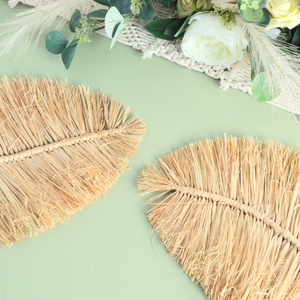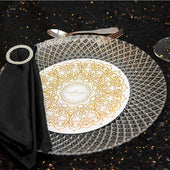Table runners and placemats are simple yet very important when preparing your tables and transforming them from ordinary to presentable. Adding them to your table can enhance any dining experience.
These crucial table additions come in a range of sizes, colors, and materials that fit your event's theme and personal style.
Selecting Table Runners and Placemats
The first thing to look at is your venue's color palette and design. Purchase runners and placemats that accentuate or contrast the dining space. For example, if your event space has neutral tones, choose placemats and runners in bright hues that will add a pop of color to the setting.
The material and texture of your decor pieces can also influence the overall look and feel of your dining table. Cotton or linens lend a casual, easygoing vibe, whereas burlap or rattan give a rustic charm. Choose materials that suit the decor style you want to go for.
You should also make sure that the size and shape of your table runner and placemats are suitable for your table and dinnerware. Placemats should have ample room for plates, cutlery, and glassware.
You may be asking how long a table runner should be or should a table runner be longer than the table. In general, the runner should be longer than the table, extending 12 to 18 inches on each side. This frames your table and creates a beautiful overhang!
Setting the Foundation of Your Table-Setting
Before setting down any table linens, make sure that your table runner and placemats are on a smooth and clean table surface. Wipe down the table with a damp cloth to remove any dust, crumbs, or spills.
Depending on the occasion and your preference, you may choose to use tablecloths as a base layer for the runners and placemats. Simply select one that matches the color scheme of the dining space. However, if you want a more modern vibe, skip the tablecloths and use the placemats to define each place setting.
Placing the Table Runner
Creating a nicely styled table setting starts by simply laying your runner properly. Place your table runner lengthwise in the center of the dining table. Make sure it is centered and aligned with the table's edges.
Do not let it hang too low or too high from the sides. Go for a tidy look by letting your runner drape slightly over the edges of the table. Finally, smooth out wrinkles and folds to ensure that it is straight and flat.
Does a table runner have to hang over?
Ultimately, it's all up to you and your unique preferences. Some prefer a runner that drapes over the sides, while others want a runner that hovers on the table ends for a sleek look. Adjust the placement of your runner to achieve the overall aesthetic you are aiming for.
Arranging the Placemats
In a table setting, coordination is everything. Follow these tips for organizing your placemats.
- Place your placemats evenly along the length of the dining table. Make sure that the edges of the placemats are parallel to the edges of your table.
- Leave equal spacing between each setting for a cohesive layout. You can use a measuring tape or ruler to get an accurate spacing or simply eyeball it.
- Ensure that the edges of the placemats are lined with the edges of the runner. This helps bring the tablescape together, making your setting appear coordinated.
- Get creative by layering placemats of various colors, patterns, and sizes. Ensure that all layers are visible and do not obstruct any tableware.
Create an upscale table setting and a memorable dining experience by properly arranging your table runner with matching placemats!
Our Products
Table Placemats
Table Runners
Disposable Dishware














